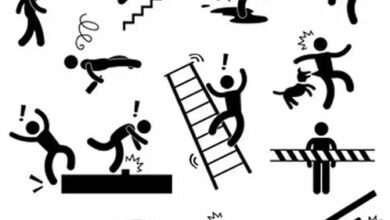What is Behavioral testing and What is analyzed and benifits
Behavioral testing
Conducting a behavioral testing with your employees can bring countless benefits and possibilities for improvement. There is an aspect that behavioral management impacts, which is essential for the proper functioning of a company: the turnover rate.
It is known that most dismissals occur more for behavioral reasons than lack of technical skills. Also, the reasons for spontaneous dismissals — people who decide to leave the company — are closely related to behavioral aspects.
Therefore, it is important to know what a behavioral test is, what the objectives of performing this assessment are, and understand how it can contribute to decreasing your company’s turnover rate. Continue reading this post and learn about the benefits this tool can bring to your organization.
It is a questionnaire with the objective of classifying people according to their behavioral abilities , that is, their soft skills . We know that people are different in many points of view, but according to research, applied methodologies and scholarly observation, it is possible to identify some types of profiles and group them according to their characteristics.
With this assessment, you can direct the right people to the right roles , for example, a professional who has analytical skills, who is easy to concentrate, who prefers to devote a lot of time to a single task and does not feel influenced by the environment , must be led to positions that demand these qualities.
Likewise, a communicator profile, which is easy to talk to new people, maintains optimism in their activities, therefore, it is a more eccentric profile that also has its points of use in various positions.
The purpose of a behavioral test is precisely that: to map the different behavior profiles and adapt them to the places where they will perform better .
What is analyzed in the Behavioral testing?
The behavioral test analyzes the strengths and weaknesses of each person. It is necessary to know the characteristics of people to know which of them can be improved and exploited.
In the behavioral test, different data is collected on various aspects. For example:
- Leadership Spirit
- Leader is a person who has the ability to manage a team, motivating each of its members to give their best and achieve their goals. Companies are always looking for people with a strong leadership spirit for all positions, not just senior positions.
- Influence
- The ability to influence your colleagues results in excellent relationships and connections with your colleagues.
- Communication skills
- Essential in any internal work environment of a company, for excellent communication with colleagues, bosses, clients, and even more important, the ability to listen.
- Ability to work under pressure
- There are profiles that prefer to work under pressure while for others working under pressure sounds threatening and demotivating.
- Creativity
- Think “outside the box”, in a differentiated way, always with innovative ideas.
- Motivation causes
- The work environment, the benefits offered by the company, flexibility, quality of life, etc.
- introversion/extraversion
- Interpersonal relationship skills.
- Stability
- How you handle changes and transformations
- Focus
- Attention, willingness to deliver on time, and ability to identify what is necessary to focus on the work and what gets in the way.
- Analytical and Strategic Capacity
- Attention to data, detail-oriented and decision making based on reasoning.
This type of assessment helps the recruiter understand in a deeper way how the candidate behaves and thinks. And it is not easy to obtain through interviews and group dynamics.
Application of the Behavioral testing
There are several behavioral tests available for HR professionals such as Disc, MBTI , Quantum, Hogan, Veca, PPA, PDA, and Enneagram, among others. Evaluate the methodology of each test to know which one best suits the needs and reality of your company.
Benefits of applying the Behavioral testing
When it comes to the selection process of a new professional, the application of behavioral evaluation has several advantages in order to deepen your knowledge about your candidates. See the main ones:
1-Talents with greater adherence to the organization’s culture
With a deeper analysis of the behavioral profile of the candidates, it is possible to hire those who have a better cultural fit with your company, with values and visions aligned with the organization’s principles.
Making selection through only knowledge, skills and work experience of new talent is not totally effective. It should be evaluated whether the person’s values also fit with the company.
2-High quality equipment
It is essential that teams working together have profile compatibility. When the team is made up of people who have compatible profiles, the possibility of having a better relationship in the work environment increases significantly, in addition to having greater productivity and performance. The incompatibility of profiles can have consequences such as interpersonal problems, errors and demotivation of collaborators.
With high-quality teams with profiles that fit the organizational culture, your company’s turnover decreases since your employees will be satisfied in their workplace.
3-Promotion of an effective employee
Many employees of a company are promoted to leadership positions without having the technical aptitude or effectiveness for it.
It is important to identify and promote officials who have a leadership profile, good communication, high performance and truly share the same values of a company. In this way, the company will have in its staff people in high positions who really make a difference in its team and in production.
If the promotions are not effective and a person is placed who does not have the necessary profile for a role of influence and management of a team, the individual will end up being removed or rejected.
4-Identification of points to improve
With the behavioral evaluation, it is possible to know what the improvement points of your collaborators are that can be developed through training, in order to grow in the company in an appropriate way.
These evaluations allow us to reveal characteristics that not even the person themselves perceived they had. Thus, by knowing their strengths and weaknesses, individuals know the correct path for progress and how to be motivated.
Team managers already know the personality traits of their team and will know much better how to treat each of them.




